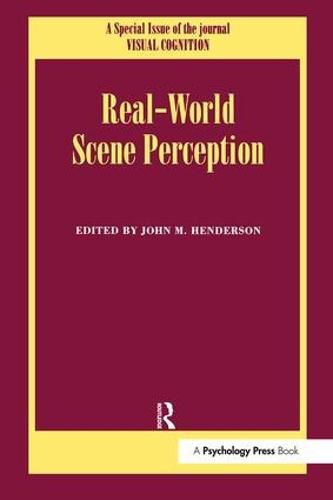Readings Newsletter
Become a Readings Member to make your shopping experience even easier.
Sign in or sign up for free!
You’re not far away from qualifying for FREE standard shipping within Australia
You’ve qualified for FREE standard shipping within Australia
The cart is loading…






The current volume, a special issue of Visual Cognition, brings together an eclectic group of investigators, all of whom study critical issues in the perception of true real-world scenes. Topics include the rapid acquisition of scene gist; scene recognition; spatial layout and spatial scale; distance perception in scenes; updating of scene views over time; visual search for meaningful objects in scenes; scene context effects on object perception; scene representation in memory; the allocation of attention including eye fixations during scene viewing; and the neural implementation of these representations and processes in the brain. Because the study of real-world scene perception benefits from an interdisciplinary approach, contributors to the volume use a variety of research methods including psychophysical and behavioral techniques, eyetracking, functional neuroimaging (including fMRI and ERP), and mathematical and computational modeling. While much has been learned from studying simplified visual stimuli, many of the articles in this volume make the important point that understanding the functional and neural architectures of the visual system requires studying how that system operates when faced with the types of real-world stimuli that evolution crafted it to handle.
$9.00 standard shipping within Australia
FREE standard shipping within Australia for orders over $100.00
Express & International shipping calculated at checkout
The current volume, a special issue of Visual Cognition, brings together an eclectic group of investigators, all of whom study critical issues in the perception of true real-world scenes. Topics include the rapid acquisition of scene gist; scene recognition; spatial layout and spatial scale; distance perception in scenes; updating of scene views over time; visual search for meaningful objects in scenes; scene context effects on object perception; scene representation in memory; the allocation of attention including eye fixations during scene viewing; and the neural implementation of these representations and processes in the brain. Because the study of real-world scene perception benefits from an interdisciplinary approach, contributors to the volume use a variety of research methods including psychophysical and behavioral techniques, eyetracking, functional neuroimaging (including fMRI and ERP), and mathematical and computational modeling. While much has been learned from studying simplified visual stimuli, many of the articles in this volume make the important point that understanding the functional and neural architectures of the visual system requires studying how that system operates when faced with the types of real-world stimuli that evolution crafted it to handle.